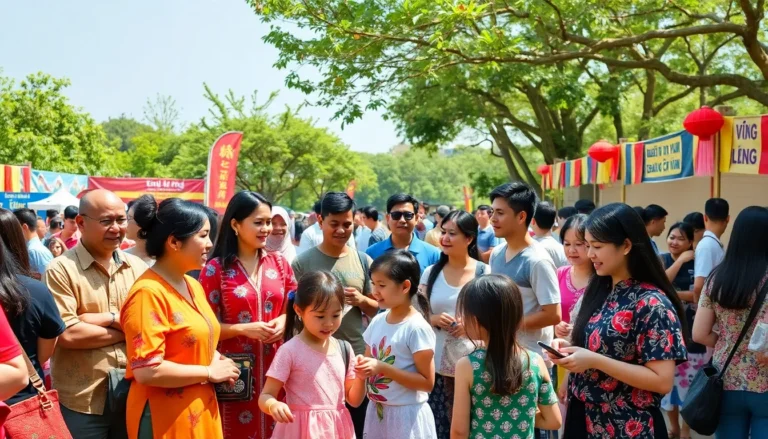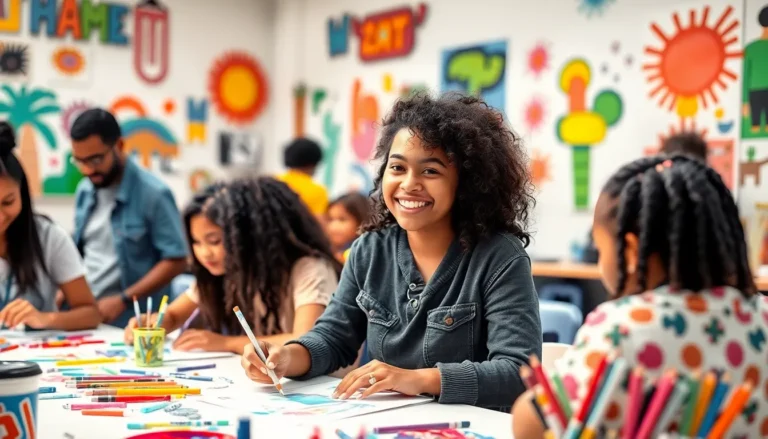In the bustling world of dining, loyal diners are like gold nuggets buried in a mountain of food options. They bring warmth to a restaurant’s atmosphere and provide invaluable insights that can elevate a dining experience from ordinary to unforgettable. Understanding what makes these diners tick can be the secret sauce to a restaurant’s success, and who wouldn’t want to serve up a dish that keeps them coming back for more?
Table of Contents
ToggleUnderstanding Loyal Diner Insight
Loyal diners serve as essential pillars in the restaurant industry. Their feedback and preferences shape the dining experience and foster a vibrant atmosphere.
Importance of Customer Loyalty
Customer loyalty plays a crucial role in a restaurant’s success. Loyal diners generate consistent revenue through repeat visits. Additionally, they often act as brand advocates, sharing positive experiences with friends and family. This organic marketing reduces the need for costly advertising efforts. Establishing strong relationships with loyal customers can enhance a restaurant’s reputation in a competitive market. Engaging these patrons enhances the dining experience and boosts long-term sustainability.
Factors Influencing Diner Loyalty
Several factors influence diner loyalty and satisfaction. Quality of food remains a top priority for most patrons. Consistent service quality directly impacts their experience. Customers appreciate knowledgeable staff who provide personalized service. Atmosphere also contributes significantly, with elements such as decor and ambiance affecting impressions. Pricing and value for money resonate with diners, particularly during tough economic times. Promotions and loyalty programs offer additional incentives that strengthen their connection to a restaurant. By focusing on these key areas, restaurants can cultivate lasting relationships with their loyal patrons.
Strategies for Gaining Loyal Diners
Understanding the preferences of diners fosters loyalty. Restaurants implement several strategies to enhance customer relationships and encourage repeat visits.
Personalization Techniques
Personalization techniques boost loyalty among diners. Tailoring experiences based on individual preferences creates memorable interactions. Collecting data on past orders helps identify favorite dishes and special occasions. Offering customized promotions and recommendations enhances the overall dining experience. Engaging diners with birthday greetings or exclusive offers fosters emotional connections. Utilizing customer feedback ensures continuous improvement of services and menus.
Engagement through Social Media
Engagement through social media creates a sense of community. Posting high-quality images of dishes attracts attention and entices diners. Responding to comments and messages shows diners they’re valued and heard. Sharing behind-the-scenes content humanizes the brand and builds trust. Running contests and giveaways encourages interaction and increases brand visibility. Highlighting customer stories and testimonials fosters connections, turning diners into advocates.
Measuring Loyal Diner Insight
Measuring loyal diner insight involves evaluating various aspects of their dining experience. Identifying what keeps diners coming back is crucial.
Key Performance Indicators
Several key performance indicators (KPIs) help assess diner loyalty. Customer retention rates indicate how many diners return after their initial visit. Average spend per visit shows the revenue generated from each patron. Frequency of visits reveals how often loyal diners choose a restaurant for meals. Net Promoter Score (NPS) measures customer willingness to recommend to others. Lastly, customer satisfaction surveys provide direct feedback, allowing restaurants to gauge experiences accurately.
Tools for Gathering Feedback
Restaurants utilize various tools to gather feedback from loyal diners. Online survey platforms like SurveyMonkey or Google Forms allow for easy distribution. Social media channels enable direct communication and enable feedback through comments and messages. Customer relationship management (CRM) software tracks preferences and interactions, creating personalized experiences. In-person comment cards provide an immediate way for diners to express their thoughts. Loyalty programs often include feedback features that encourage participation in exchange for rewards.
Case Studies of Successful Brands
Successful brands leverage their understanding of loyal diners to enhance the dining experience. Insights from these brands illustrate effective strategies that promote customer retention and satisfaction.
Brand A: Innovative Loyalty Programs
Brand A has revolutionized customer retention through unique loyalty programs. This brand employs a points-based system where patrons earn rewards for every dollar spent. Members receive special discounts during their birthdays, creating a personalized touch. Data shows that loyalty program members visit 20% more frequently than non-members. By integrating a mobile app, the brand also provides updates on new menu items and exclusive events. Such innovations keep diners engaged and returning for more.
Brand B: Community Engagement Strategies
Brand B focuses on engaging the local community to foster loyalty. This brand organizes regular events, such as food festivals and cooking classes, which encourage participation from diners. Collaborations with local charities enhance community ties while promoting brand values. Survey data reveals that 70% of diners feel more connected to a brand involved in community initiatives. Social media campaigns highlight these events, attracting more customers and increasing brand visibility. Through these efforts, Brand B solidifies relationships with loyal patrons and builds a strong community presence.
Loyal diners are invaluable assets in the restaurant landscape. Their consistent patronage not only boosts revenue but also enriches the dining atmosphere. By understanding their preferences and motivations, restaurants can create memorable experiences that keep these customers coming back.
Fostering strong relationships through personalized interactions and community engagement enhances loyalty. Utilizing feedback mechanisms and loyalty programs further solidifies these connections. As restaurants focus on these strategies, they not only improve customer satisfaction but also position themselves for long-term success in a competitive market.



